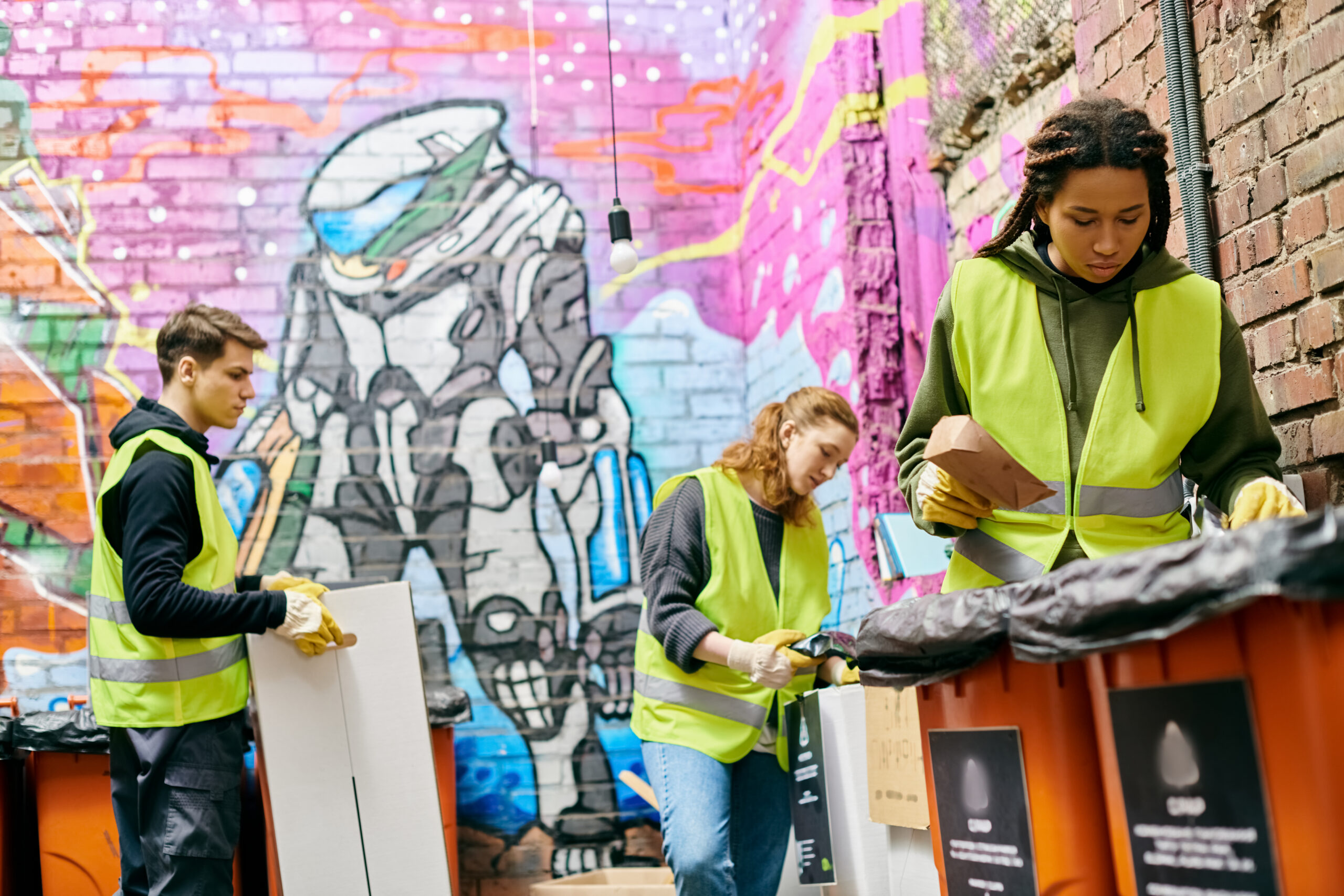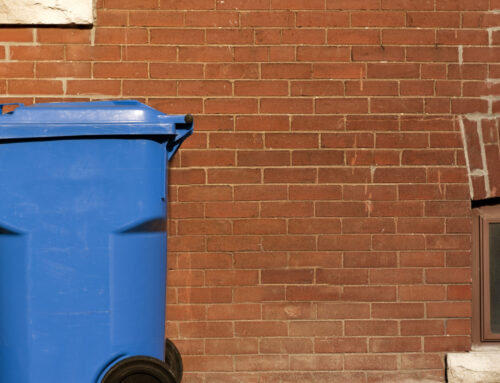
Sanitation services are the backbone of public health, environmental sustainability, and community well-being. As urban populations grow, waste management has become an increasingly complex issue. With a growing demand for more efficient, sustainable, and cost-effective methods of waste collection and disposal, innovation in sanitation services has never been more critical. In this article, we will explore the current trends and exciting innovations in waste collection, examining how they are shaping the future of sanitation services and making our cities cleaner, greener, and smarter.
Smart Waste Management Systems
One of the most promising innovations in waste collection is the implementation of smart waste management systems. These systems leverage Internet of Things (IoT) technology to improve the efficiency of waste collection processes. By installing sensors in waste bins and containers, sanitation companies can monitor waste levels in real time, allowing for optimized pickup schedules. This means garbage trucks only visit bins that need to be emptied, reducing unnecessary trips, saving fuel, and lowering emissions.
These smart systems can also provide valuable data for city planners. They track waste production patterns, helping to identify areas of high waste generation, predict future waste needs, and optimize resource allocation. For residents, the benefit is clearer—fewer overflowing bins, less litter, and more efficient pickups. Additionally, cities can track their waste diversion rates, helping them improve their recycling programs and reduce landfill use.
Automated Waste Collection Vehicles
Another groundbreaking innovation in waste collection is the development of automated waste collection vehicles. These trucks are equipped with robotic arms and advanced sensors that can autonomously lift and empty trash bins. Not only does this technology reduce the need for human labor, but it also increases the efficiency and speed of waste collection. The robotic systems can operate with high precision, preventing accidents, and reducing the risk of injuries.
Automated waste collection vehicles are also more eco-friendly. By using electric-powered systems instead of diesel trucks, they significantly reduce carbon emissions, making them a sustainable option for cities. Moreover, automated trucks can be designed to collect waste from narrow streets or residential areas more effectively, enhancing waste collection services in densely populated urban environments.
Waste-to-Energy Technologies
Waste-to-energy (WTE) technologies are playing an increasingly significant role in transforming waste into valuable resources. Instead of sending waste to landfills, WTE systems use advanced technologies like incineration, anaerobic digestion, and gasification to convert waste into energy, such as electricity or heat. This reduces the amount of waste that ends up in landfills, reduces greenhouse gas emissions, and provides an alternative source of power.
In some systems, WTE technologies can even produce biofuels from organic waste, creating a circular economy where waste not only powers cities but also fuels transportation and other industries. These technologies can be especially useful in urban areas where landfill space is limited, helping municipalities manage waste more effectively while contributing to their energy needs. Furthermore, advancements in WTE technologies are making these systems cleaner, more efficient, and more capable of processing a variety of waste materials.
Recycling Innovations: From Plastic to Circular Economy
The future of waste management cannot ignore the growing importance of recycling, and innovations in recycling technologies are central to the future of sanitation services. One of the most promising developments is the introduction of advanced sorting technologies, such as artificial intelligence (AI) and robotics, that can automate the sorting of recyclables. These systems use machine learning algorithms and robotic arms to identify and sort materials such as paper, plastic, glass, and metals more quickly and accurately than human workers.
In addition to improving sorting efficiency, these technologies help minimize contamination in recycling streams, a common problem that makes recycling less effective. As a result, more materials can be recovered and reused in manufacturing, reducing the demand for virgin materials and conserving resources.
The concept of a “circular economy” is also gaining traction in waste management. In this model, products are designed to be reused, repaired, or recycled, rather than discarded after a single use. Companies are exploring ways to design products and packaging that are easily recyclable, and even to encourage “take-back” schemes, where companies take responsibility for their products after their useful life ends. This approach helps keep valuable materials in circulation and reduces waste.
Biodegradable and Compostable Alternatives
The push for sustainable waste management is also driving innovation in biodegradable and compostable materials. Single-use plastics have been a major contributor to waste and environmental degradation, particularly in oceans and waterways. In response, scientists and businesses are developing alternative materials that decompose more easily and have less environmental impact.
Biodegradable plastics, made from plant-based materials such as cornstarch or sugarcane, are a promising alternative. Unlike traditional plastic, which can take centuries to break down, biodegradable plastics degrade much faster and leave fewer harmful residues. Compostable materials, such as compostable food packaging or cutlery, are also gaining popularity. These materials can break down into organic matter and contribute to composting systems, helping reduce the volume of waste sent to landfills.
Compostable materials are particularly useful in food waste management, where food scraps can be composted rather than ending up in landfills. Advances in composting technologies, such as industrial composters and home composting systems, are making it easier to process organic waste and turn it into valuable compost that can be used to enrich soil.
Zero-Waste and Resource Recovery Initiatives
Zero-waste initiatives are increasingly being adopted by cities and businesses as they aim to minimize waste and maximize resource recovery. These initiatives focus on redesigning systems to reduce waste at the source, reusing materials whenever possible, and recycling everything that can be recycled.
One example of a zero-waste strategy is the implementation of community composting programs, where food scraps from households and businesses are collected and turned into compost for local farms or gardens. Some cities have started offering incentives for households and businesses to reduce their waste generation, such as rebates for composting or rewards for using less plastic.
In addition, many municipalities are exploring advanced resource recovery systems that can extract valuable materials from waste. For instance, some systems use advanced filtration methods to recover metals from electronic waste (e-waste), which can then be recycled and reused in manufacturing. These resource recovery systems reduce the environmental impact of waste disposal and create new economic opportunities by recovering valuable materials from waste streams.
Waste Collection via Drones and Robots
As cities continue to grow and become more congested, traditional waste collection methods may face limitations. In response, some innovative companies are looking into the use of drones and robots to assist in waste collection. For example, drones could be used to monitor waste levels in large industrial complexes or remote areas, providing real-time data on when trash bins need to be emptied.
Similarly, robots equipped with advanced sensors and AI algorithms could autonomously collect waste in densely populated areas or areas difficult for trucks to access. These robots could collect smaller amounts of waste, such as litter, or help with recycling collection. By using drones and robots for waste management, cities could create more flexible, efficient, and cost-effective waste collection systems.
Public Engagement and Education
Finally, the future of sanitation services isn’t just about technology—it also involves educating the public about the importance of waste reduction, proper disposal, and recycling. Innovative waste collection services are increasingly focusing on public engagement and education to ensure that residents and businesses understand the importance of their role in waste management.
Mobile apps and online platforms are being used to educate citizens about recycling rules, collection schedules, and the benefits of reducing waste. Some cities are also implementing gamification strategies, where residents earn points or rewards for recycling properly or reducing their waste production. By making waste management a shared responsibility, these initiatives are helping to create more sustainable, waste-conscious communities.
Reliable Sanitation for a Safer Environment
The future of sanitation services is bright and full of innovative technologies that promise to make waste collection more efficient, sustainable, and eco-friendly. From smart waste management systems and automated vehicles to waste-to-energy solutions and circular economies, the future of waste collection is being reshaped by advancements that benefit both businesses and communities. As technology continues to evolve, we can expect waste management to become even more integrated into our daily lives, helping to build cleaner, greener cities for future generations. The key to success will be combining these innovations with public engagement and education, creating a waste-conscious society that takes responsibility for the planet’s well-being. Begin this journey by calling AAA Sanitation & Garbage Removal today!
AAA Sanitation & Garbage Removal
79 Business Dr Ste A
Hull, GA 30646
(706) 543-7788
https://aaasanitationco.com/






Leave A Comment